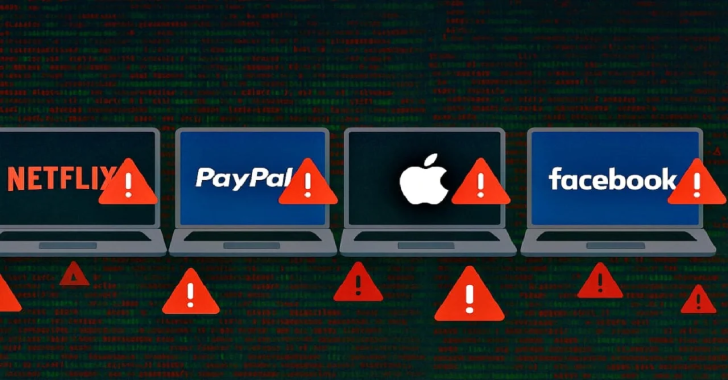As the Internet of Things (IoT) continues to transform industries with intelligent automation, real-time analytics, and seamless connectivity, IoT security has emerged as a critical pillar for ensuring operational safety, privacy, and compliance. From smart homes to industrial control systems, the proliferation of connected devices brings complex vulnerabilities that demand comprehensive protection strategies.
Understanding IoT Security: A Critical Necessity in a Connected World

IoT security refers to the methods, protocols, and technologies used to safeguard connected devices and networks in the Internet of Things ecosystem. These protections span from hardware and software to network and cloud environments, ensuring that data remains confidential, accurate, and accessible only to authorized parties.
IoT devices often operate with minimal processing capabilities and outdated firmware, making them easy targets for cyberattacks. Without robust security controls, these devices expose individuals, businesses, and even nations to data breaches, system failures, and malicious exploitation.
Why IoT Security Matters
The significance of IoT security is underscored by its potential impact:
- Data Protection: Sensitive user and enterprise data flow continuously through IoT devices.
- Operational Continuity: Downtime from attacks on industrial IoT (IIoT) systems can halt manufacturing lines.
- Privacy Preservation: Compromised home automation systems could leak private user data.
- Regulatory Compliance: Legal frameworks such as GDPR and HIPAA require secure data handling.
Key Challenges in IoT Security
1. Lack of Standardization
The absence of universal security standards for IoT devices leads to inconsistencies across manufacturers. Varying protocols, encryption methods, and security features result in uneven protection levels, making it difficult to implement holistic security solutions.
2. Limited Device Capabilities
Many IoT devices are designed with limited memory, processing power, and battery life. This limits the implementation of traditional security mechanisms like strong encryption or intrusion detection systems, exposing them to brute force attacks and firmware manipulation.
3. Massive Attack Surface
The sheer scale of interconnected devices increases the attack surface exponentially. Every device becomes a potential entry point for cybercriminals. A single compromised node can grant lateral access to an entire IoT network.
4. Outdated Firmware and Software
A significant percentage of IoT devices run legacy firmware that rarely receives updates. Manufacturers often prioritize new product development over ongoing support, leaving older devices exposed to known vulnerabilities.
5. Insecure Communication Protocols
IoT devices frequently use lightweight and sometimes outdated communication protocols (e.g., MQTT, CoAP) that lack built-in security features. Unencrypted transmissions can easily be intercepted, leading to man-in-the-middle (MITM) attacks or data tampering.
6. Lack of User Awareness
End users rarely understand the importance of updating default credentials, configuring firewalls, or enabling secure settings. Weak passwords and unsecured interfaces are common vulnerabilities that attackers readily exploit.
Fundamental Requirements for Robust IoT Security
1. Device Authentication and Identity Management

Each device in an IoT network must have a unique, verifiable identity. Mutual authentication protocols ensure that only trusted devices communicate within the network. Techniques include digital certificates, biometrics, and hardware-based identity modules.
2. End-to-End Encryption
To protect data in transit and at rest, AES-256 and TLS encryption should be implemented across all communication channels. Secure encryption mitigates the risk of data interception, tampering, or eavesdropping.
3. Regular Firmware Updates and Patch Management
Manufacturers must commit to long-term firmware support, enabling timely updates that patch newly discovered vulnerabilities. Secure boot mechanisms should verify the integrity and authenticity of firmware during updates.
4. Secure Boot and Hardware-Based Security
Secure boot ensures that only verified firmware runs on a device. Combined with Trusted Platform Modules (TPMs) and Hardware Security Modules (HSMs), devices gain an additional layer of protection against low-level attacks.
5. Network Segmentation and Micro-Segmentation
Isolating IoT devices from critical IT infrastructure through network segmentation limits the impact of a compromised device. Micro-segmentation allows for granular traffic control, reducing lateral movement across systems.
6. Real-Time Monitoring and Anomaly Detection
Implementing Intrusion Detection Systems (IDS) and Security Information and Event Management (SIEM) tools tailored for IoT environments enables real-time threat detection and incident response.
7. Role-Based Access Control (RBAC)
Restricting device and data access through RBAC policies ensures that users and applications can only access what is necessary. This minimizes the risk of unauthorized operations and data exposure.
8. Secure API Integration
APIs are the backbone of IoT connectivity. Securing APIs with authentication tokens, access control lists, and rate limiting helps prevent misuse and unauthorized data access.
Emerging Trends in IoT Security

AI and Machine Learning for Threat Detection
AI-driven security tools can analyze behavioral patterns to detect anomalies and predict breaches. Machine learning models trained on device behavior can automatically flag deviations in real time.
Zero Trust Architecture
Zero Trust principles—“never trust, always verify”—are being adapted for IoT networks. This model enforces strict access verification for every user, device, and application attempting to connect.
Blockchain for IoT Security
Blockchain technology can enable immutable audit trails, decentralized authentication, and tamper-proof firmware updates. This reduces dependence on centralized authorities and boosts transparency.
Industries Most Impacted by IoT Security
- Healthcare: Patient-monitoring devices and connected medical equipment must adhere to stringent security protocols to protect sensitive health data.
- Manufacturing: Smart factories rely on IIoT systems, making them vulnerable to operational disruptions from cyberattacks.
- Automotive: Connected vehicles present safety risks if vehicle-to-infrastructure (V2I) and vehicle-to-vehicle (V2V) systems are compromised.
- Smart Homes: Devices such as smart locks, thermostats, and cameras must be secured to prevent intrusion and data leakage.
- Energy and Utilities: Power grids and smart meters are critical infrastructure components that demand robust IoT security frameworks.
Best Practices for Enhancing IoT Security

- Change default passwords immediately upon deployment.
- Disable unnecessary services and ports on devices.
- Implement firewalls specifically tailored for IoT traffic.
- Perform regular security audits and penetration testing.
- Ensure supply chain integrity through vendor assessments.
- Maintain an asset inventory to track connected devices.
The Future of IoT Security
The evolution of IoT security depends on collaboration between hardware vendors, software developers, network engineers, and policymakers. Regulatory bodies are introducing security-by-design mandates, requiring manufacturers to integrate protections from the ground up.
As 5G adoption accelerates and billions of new devices come online, the stakes for effective IoT security continue to rise. Scalable, intelligent, and adaptive solutions will be the key to maintaining safe and trustworthy IoT ecosystems in the years ahead.
Read More: Mirai IoT Botnet










